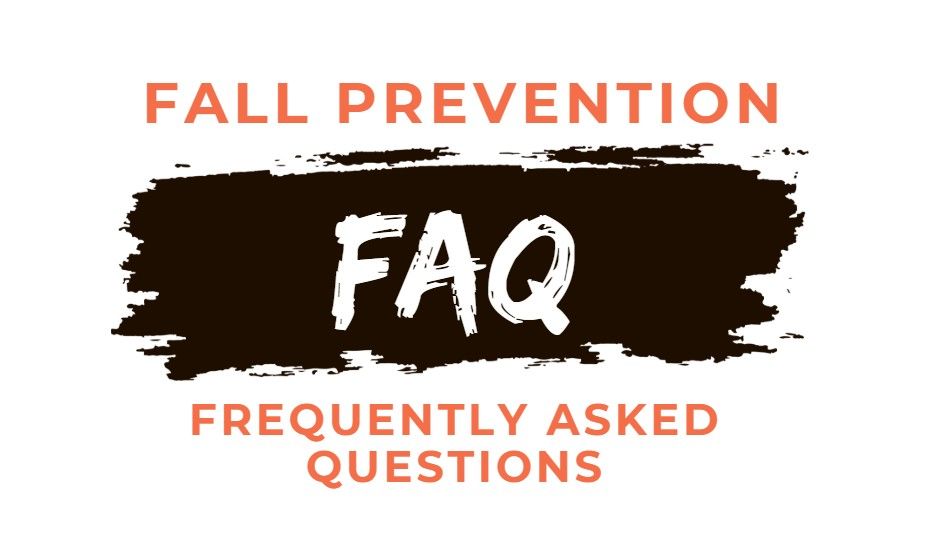
Fall Prevention FAQ for Older Adults
By The Boomer Report Staff
General Awareness
Why are falls such a serious issue for older adults?
Falls are the leading cause of injury among older adults, often resulting in broken bones, head injuries, or a loss of independence.
How common are falls among adults 65 and older?
About 1 in 4 older adults falls each year in the U.S., making it a widespread health concern.
Are falls just a normal part of aging?
No. Falls are not inevitable. With the right steps—exercise, home modifications, and medical check-ups—most falls can be prevented.
What are the most common types of falls at home?
Slips and trips from clutter, rugs, or wet floors; falls on stairs; and falls while getting in or out of furniture.
What are the most serious injuries caused by falls?
Hip fractures, head injuries, and traumatic brain injuries are the most severe, often requiring hospitalization.
How much do falls cost the U.S. healthcare system each year?
Fall-related medical costs exceed $50 billion annually and continue to rise as the population ages.
Risk Factors
What health conditions increase my risk of falling?
Arthritis, osteoporosis, diabetes, Parkinson’s, and vision or hearing loss can all increase fall risk.
Do medications really affect my risk of falling?
Yes. Some medications, or combinations of them—can cause dizziness, drowsiness, or balance problems.
Does poor vision or hearing increase fall risk?
Definitely. Poor eyesight or hearing can make it harder to notice hazards and maintain balance.
What kinds of exercise are best for fall prevention?
Strength and balance can be regained through exercise programs like Tai Chi, yoga, or walking.
Does fear of falling actually make falls more likely?
Yes. Fear often leads to less activity, which causes weaker muscles and greater fall risk.
Are women at higher risk than men for fall-related injuries?
Yes. Women are more likely to suffer fractures, especially hip fractures, due to higher rates of osteoporosis.
Prevention Basics
What are the steps experts recommend to prevent falls?
Check vision and hearing, make the home safe, exercise for balance and strength, review medications, talk to your doctor, and involve family.
Should I ask my doctor for a fall risk assessment?
Yes. If you’ve fallen, feel unsteady, or have balance issues, your doctor can run a risk assessment.
What role does nutrition play in fall prevention?
Proper nutrition supports bone strength and muscle health. Calcium, vitamin D, and protein are especially important.
How often should I get my vision and hearing checked?
Once a year, or sooner if you notice changes.
Home Safety
What simple changes can make my home safer from falls?
Remove throw rugs, improve lighting, add grab bars, and keep pathways clear.
Are throw rugs or area rugs really that dangerous?
Yes. Throw rugs are a top tripping hazard. Use non-slip backing or remove them altogether.
How can better lighting prevent falls?
Bright, non-glare bulbs help you spot hazards and navigate stairs or hallways safely.
What bathroom modifications are most effective for fall prevention?
Grab bars, non-slip mats, shower seats, and handheld showerheads.
Do I need professional help, like an occupational therapist, for a home safety check?
It’s a good idea. Professionals can spot hazards you might miss and suggest modifications. Many in-home care companies will conduct home safety assessments. Many will do this for FREE.
Where should grab bars and railings be installed?
Bathrooms (near toilets, showers, and tubs) and stairways benefit most from secure supports.
Myths & Misconceptions
If I stay home and limit my activity, am I less likely to fall?
No. Staying active actually improves balance and strength, reducing your risk.
Do most falls happen outdoors?
No. Over half of all falls happen inside the home.
Will using a cane or walker make me dependent?
Not at all. When fitted properly, walking aids improve independence and safety.
Should I avoid talking to my family about fall risks to protect my independence?
No. Family and friends can provide valuable support to help you stay independent.
If I haven’t fallen yet, do I really need to worry?
Yes. Taking steps now lowers your risk before a fall happens.
Is falling just something I can’t control?
No. Most falls are preventable through simple, consistent actions.
Family, Friends & Caregivers
How can I talk to my doctor about fall prevention?
Bring a list of questions, ask for a fall risk assessment, and discuss exercise, medications, and home safety.
What should I tell my family if I’m worried about falling?
Be specific about your concerns and ask for help with things like home safety or going to appointments.
How can caregivers reduce fall risk at home?
By decluttering spaces, installing safety equipment, and encouraging regular exercise and check-ups.
How do community programs like Tai Chi or Matter of Balance help?
These evidence-based programs improve balance, reduce fear of falling, and promote independence.
What role can fire departments or EMS play in fall prevention?
Many local fire/EMS teams partner with aging services to identify hazards, install safety features, and connect residents with resources.
Confidence & Independence
How can I rebuild confidence after a fall?
Joining a fall prevention program, doing balance exercises, and making home adjustments can help restore confidence.
Will exercise classes really make a difference at my age?
Yes! It’s never too late—exercise improves strength, flexibility, and independence.
Are there online tools to assess my personal fall risk?
Yes. Tools like NCOA’s Falls Free CheckUp help identify your risk and provide tips.
How can faith-based or community groups help with prevention?
Many host screenings, exercise classes, and education events to raise awareness and provide support.
What resources are available nationally to learn more about fall prevention?
The National Council on Aging (NCOA) and the CDC both offer guides, checklists, and local program directories.
